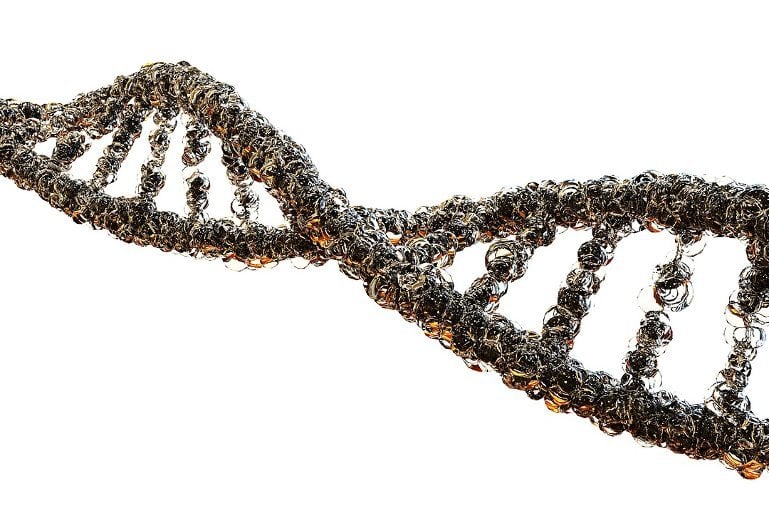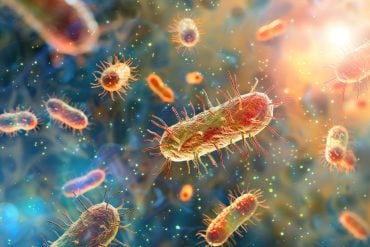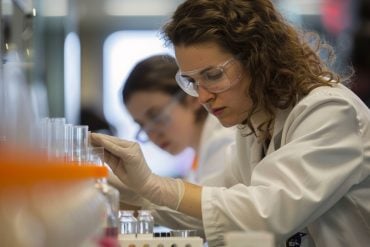Summary: Stem cells in human urine have the potential to regenerate tissue.
Source: Wake Forest Baptist Medical Center
The Wake Forest Institute for Regenerative Medicine (WFIRM) researchers who were the first to identify that stem cells in human urine have potential for tissue regenerative effects, continue their investigation into the power of these cells.
In their latest published study, they focus on how telomerase activity affects the regenerative potential of these and other types of stem cells.
Telomerase is an enzyme that is essential for the self-renewal and potential of different types of stem cells. Telomerase activity is also closely related to longevity.
The research team investigated the regenerative significance of telomerase activity, particularly in terms of characteristic cell surface marker expression, multipotent differentiation capability, chromosomal stability, and safety of in vivo formation of tumors.
Their findings provide a novel perspective to evaluate the capacity of telomerase-positive human urine-derived stem cells to become a wide variety of other cell types, and to be used as an optimal cell source for stem cell therapy or cell-based tissue regeneration.
WFIRM’s Yuanyuan Zhang, Ph.D, lead author of the paper published by Frontiers in Cell and Developmental Biology, said that human urine-derived stem cells can be easily isolated from urine samples which offers clear advantages over stem cells from other sources, like bone marrow or fat tissue which often require a surgical procedure for collection.
“Being able to use a patient’s own stem cells for therapy is considered advantageous because they do not induce immune responses or rejection,” said WFIRM Director Anthony Atala, MD, who is a co-author of the paper. “Additionally, the non-invasive collection method is suitable for rapid clinical translation.”
The study demonstrates that human primary urinary stem cells with positive telomerase activity act as a distinct subpopulation with potential regeneration capacity in both cell growth and its capacity to become other cells, Zhang said.

Better understanding of alterations in this cell subpopulation throughout the human lifespan, and how they translate into, aging, kidney damage, or cancer, among others will be beneficial overall.
“As a safe cell source, telomerase-positive human urine-derived stem cells have a robust regenerative potential, which might induce better tissue repair,” said Zhang.
The authors declare that the research was conducted in the absence of any commercial or financial relationships that could be construed as a potential conflict of interest.
Funding: This work is partially supported by Research Grants from the National Institutes of Health NIDDK (R21DK071791), (R56DK100669), NIAID (R21AI152832), and (R03AI165170).
Additional co-authors include: Yingai Shi, Guihua Liu, Rongpei Wu, David L. Mack, Xiuzhi S. Sun, and Xuan Guan.
About this genetics research news
Author: Bonnie Davis
Source: Wake Forest Baptist Medical Center
Contact: Bonnie Davis – Wake Forest Baptist Medical Center
Image: The image is in the public domain
Original Research: Open access.
“Differentiation Capacity of Human Urine-Derived Stem Cells to Retain Telomerase Activity” by Yuanyuan Zhang et al. Frontiers in Cell and Developmental Biology
Abstract
Differentiation Capacity of Human Urine-Derived Stem Cells to Retain Telomerase Activity
Telomerase activity is essential for the self-renewal and potential of embryonic, induced pluripotent, and cancer stem cells, as well as a few somatic stem cells, such as human urine-derived stem cells (USCs). However, it remains unclear how telomerase activity affects the regeneration potential of somatic stem cells.
The objective of this study was to determine the regenerative significance of telomerase activity, particularly to retain cell surface marker expression, multipotent differentiation capability, chromosomal stability, and in vivo tumorigenic transformation, in each clonal population of human primary USCs. In total, 117 USC specimens from 10 healthy male adults (25–57 years of age) were obtained.
Polymerase chain reaction amplification of a telomeric repeat was used to detect USCs with positive telomerase activity (USCsTA+).
A total of 80 USCsTA+ (70.2%) were identified from 117 USC clones, but they were not detected in the paired normal bladder smooth muscle cell and bone marrow stromal cell specimens. In the 20–40 years age group, approximately 75% of USC clones displayed positive telomerase activity, whereas in the 50 years age group, 59.2% of the USC clones expressed positive telomerase activity. USCsTA+ extended to passage 16, underwent 62.0 ± 4.8 population doublings, produced more cells, and were superior for osteogenic, myogenic, and uroepithelial differentiation compared to USCsTA−.
Importantly, USCs displayed normal chromosome and no oncological transformation after being implanted in vivo.
Overall, as a safe cell source, telomerase-positive USCs have a robust regenerative potential in cell proliferation and multipotent differentiation capacity.







